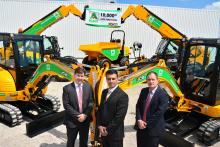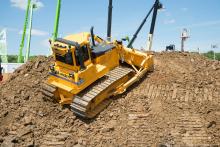
Revenue in the UK construction equipment sector totalled an estimated £13bn in 2018 – up by 18% on the £11bn figure for 2013.
A research report, commissioned by the
The share of UK production exported outside the EU was over 60% and the sector employed more than 42,000 people at around 1,550 companies. Investment in R&D by UK companies totalled £220m per annum in 2018.
In production units the UK was the largest producer of construction equipment in Europe in 2018, and the 5th largest in the world, after China, Japan, the US and India.
The telehandler (or telescopic rough terrain lift truck) has grown to be the largest product. Backhoe loaders, despite a declining market remain significant, with mini and crawler excavators also having higher production than local demand. Site dumpers, not split out are also near 10,000 units. In value terms some niche equipment, particularly for crushing and screening are high value items, so represent a higher share in value than units accordingly.
The report found that, while all 12 major market drivers are accelerating, three megatrends are driving the construction equipment sector forward.
The first is sustainability. Equipment must be considered as part of a productive, sustainable system. The CEA states that near zero and zero tailpipe emissions equipment, alternative fuels, will broaden product ranges further. It adds that decarbonisation will be a driver in some segments, to meet CSR (corporate social responsibility) and LEZ (low emission zone) requirements.
Secondly, productivity improvements will require collaboration between OEMs, customers and government. Digitalisation will be a foundation, but competitiveness of the construction sector will also be critical.
The third megatrend is skills development, which will need to focus on a wider range of skills than historically, with digitalisation, servicification, autonomy and electrical machines requiring IT skills over and above mechanical skills.
The report states that a shift to digital skills will require a significant increase in new grades of engineers and technicians to design and operate digital sites and digital machines. Skills shortages at all levels will present a problem for both the construction and the equipment sectors. Investment is therefore required in apprentices, undergraduate and post-graduate education to enable productivity and sustainability benefits. Additional investment over £250m annually will be needed in education for new skills.






